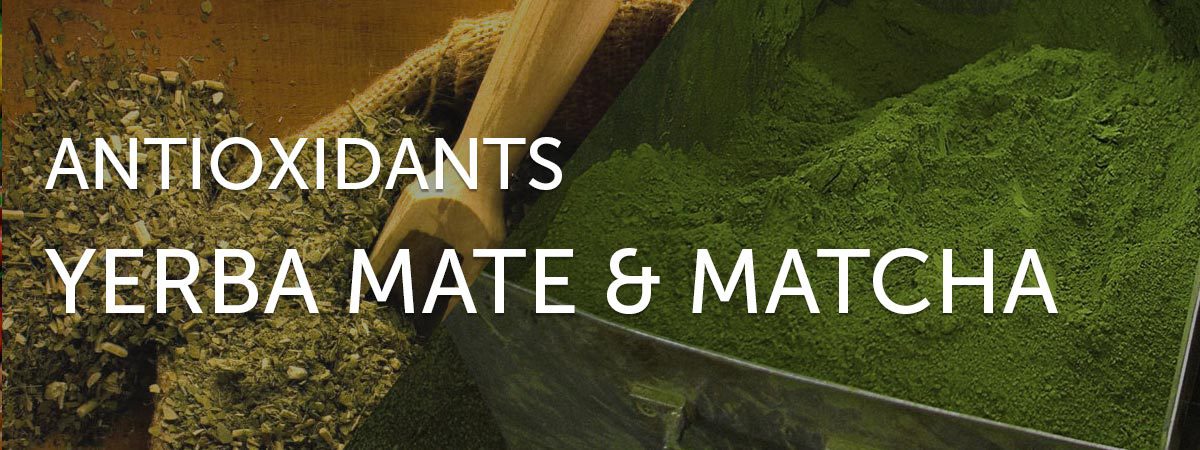I think you will agree that the majority of nutritional information is confusing and well-hidden. This makes things extra difficult for those of us that care about what we put into our bodies. Why should ‘being healthy’ be so hard and being ‘unhealthy’ so easy?
We believe there is a better way.
In this guide we will scrutinize the antioxidants content of yerba mate and compare it to some of the other popular beverages we drink daily, but first…
What exactly are antioxidants?
Antioxidants are naturally occuring molecules in plant-based foods such as fruits, vegetables, tea, wine, and chocolate. While there are thousands of antioxidant compounds out there, youΓÇÖve probably heard of the more popular ones, such as flavanols (found in chocolate), resveratrol (found in wine), and lycopene (found in tomatoes). Other popular antioxidants include vitamins A (beta-carotene), C, E, and catechins.
How do antioxidants help?
Antioxidants help prevent or stop cell damage caused by oxidants. Oxidants are free radicals that you find in the environment, but are also produced naturally in your body.
Your body creates them to help fend off viruses and microbes, but if you have too many, they can cause serious damage and contribute to certain cancers and heart disease. You also get hit with oxidants daily from things like air pollution, cigarette smoke, and alcohol.
What foods should I eat for antioxidants?
This is difficult to answer as we all live and eat in different environments, but the one wise thing you can do is stick with plants and introduce lots of colour into your meals. Carrots, Grapefruits, Tomatoes, Beans, Lettuce, Spinach, Blueberries …etc.
What about drinks?
When it comes to healthy drinks ladened with antioxidants, you have a few choices. We won’t recommend wine because the alcohol harms your liver and of course you’ll eventually end up drunk.
Coffee has antioxidants, but in much smaller quantities, and if you drink a lot of coffee, you will experience the jitters. This leaves us with green tea (matcha) and yerba mate.
How does yerba mate compare with matcha green tea?
A study dating back to 1991 by Dr. Tenorio Sanz found that the ΓÇ£Mineral elements in the yerba mate herb show as many as 196 different active chemicalsΓÇ¥. It was also found that 144 of these active chemicals were also found in green tea. This is still a high number, but we cannot ignore the fact that there is a deficit of 52 chemicals.
More recently, in 2005, Elvira de Meija and a team at the University of Illinois carried out further testing on yerba mate leaves to substantiate these claims over green tea. They found that yerba mate not only had “higher levels of antioxidants than green tea”, but that the yerba mate also had ΓÇ£90% more metabolism-boosting nutrientsΓÇ¥. This is a significant difference in favor of yerba mate.
Cost wise how do they compare?
Matcha tea is a ceremonial tea from Japan and the high-quality stuff costs a lot. A quick search shows a cost of £25 to £37.50 ($48.90) for a mere 100g. Compare that with yerba mate, where the most expensive 100g you can find is around £9.98 ($13.0), and even that is overpriced in our opinion.
Remember that yerba mate is the daily social drink of millions across South America. For the people of South America, it is the equivalent of coffee to us Europeans, except it is much healthier.
I tried yerba mate and found it too bitter?
We all have different preferences, and that is perfectly fine. Afterall, not everyone likes coffee or English tea. But if you are willing to give yerba mate another try, go for a brand that has a mellow taste. Some brands are too overpowering and can put people off.
Also, try the Syrian or Lebanese way. Give your yerba a rinse with room-temperature water first. You basically fill your gourd half-way with yerba, then pour room-temperature water on top. Let the water absorb for a minute, then throw out that water. Now fill with your warmed (75 to 80 C) water.
We hope you found this useful, and we would be very interested in hearing your thoughts below.

